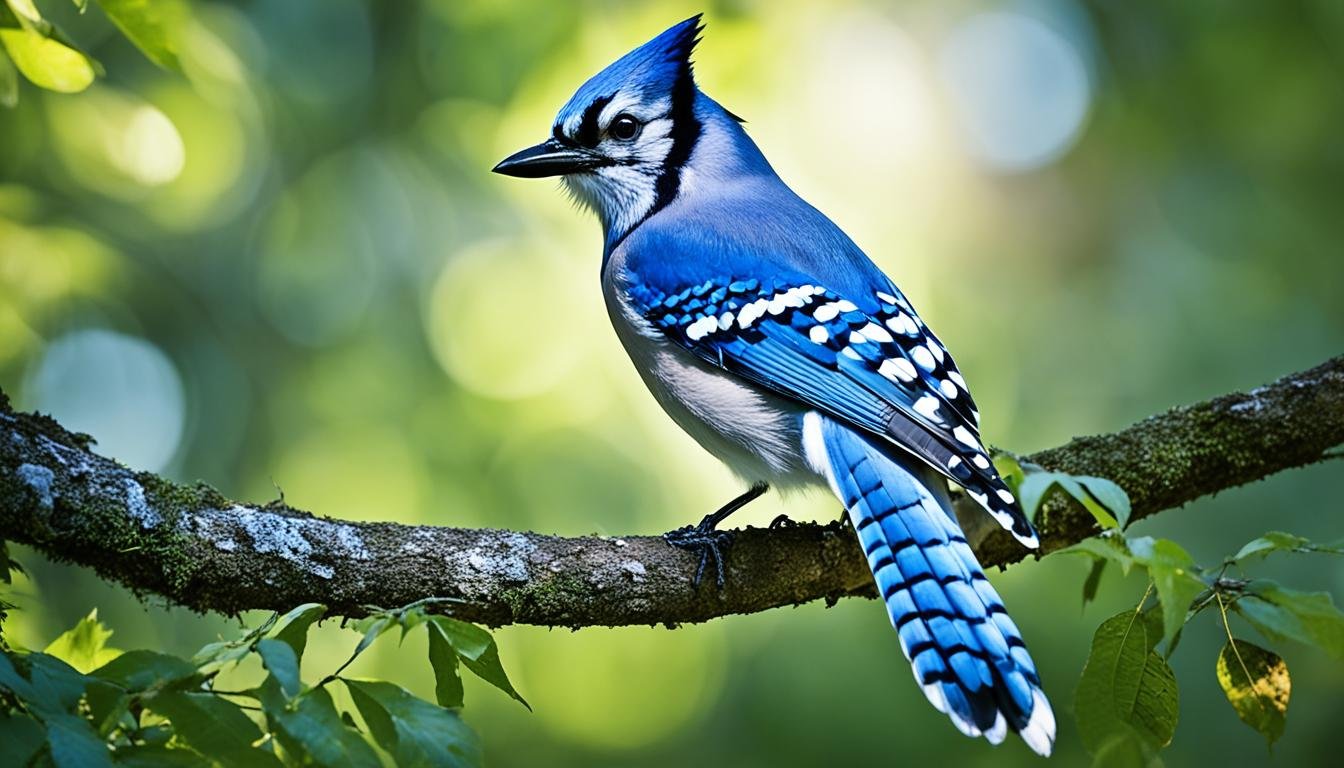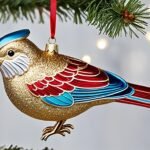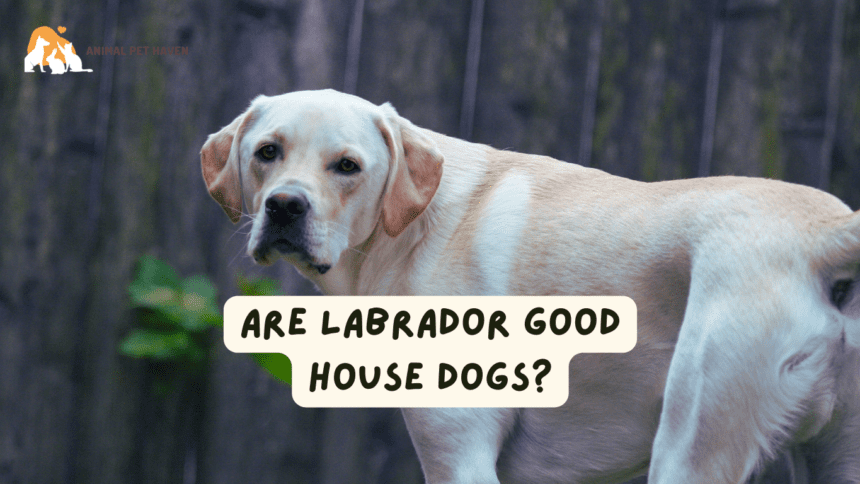The vibrant Blue Jay Bird, a beacon of beauty with its striking blue, white, and black plumage, is far more than a visual spectacle. Inquisitive and highly adaptable, these birds have forged a remarkable habitat range primarily across the eastern United States and Canada, expanding westwards and showcasing their resilience in both behavior and conservation. Though one might wonder whether the enigmatic Blue Jays are inhabitants of Europe, their presence is a phenomenon exclusive to the Western Hemisphere.
Special in so many ways, the Blue Jay’s perky crest and exuberant calls are telltale signs of its intelligence and complex social structure. Observing this fascinating creature can symbolize longevity, fidelity, and solidarity, as their monogamous partnerships and tight-knit family units exemplify these traits.
A sighting of these birds, far from being a rarity, signifies an encounter with one of nature’s most adaptable survivors. The Blue Jay population has seen a significant increase of 28% between 1966 and 2015, demonstrating their persistence despite environmental changes. Moreover, the Blue Jay’s ecological role, notably their varied diet heavily reliant on insects, seeds, and nuts, underscores the importance of their conservation for the balance of our ecosystems.
As we delve deeper into the world of Blue Jays, we uncover a complex avian that is neither rare nor insignificant but rather a testament to avian adaptability and the importance of continued conservation efforts. Join us as we explore the captivating life of the Blue Jay Bird, celebrating the unique habitat preferences, behaviors, and conservation status of this remarkable species.
Understanding the Blue Jay Bird
At the heart of Understanding Blue Jay Birds is recognizing their distinctive appearance. The Blue Jay, with its striking blue, white, and black plumage, is not just a visual marvel but also a specimen of intricate behaviors and social patterns that underline the intelligence of these feathered creatures.
Behavioral observations reveal that Blue Jays often migrate in large flocks along impressive geographic landmarks such as the Great Lakes and Atlantic coasts. These migrations underscore their complex social systems, as they navigate vast distances in groups rather than solitary flights. With only 1% of the birds showing traces of eggs or other birds in their diet, according to an expansive study, the Blue Jay bird predominantly forages for nuts and seeds, positioning them as less of a threat to other avian species than commonly perceived.
The longevity of these birds is notable, with the oldest known wild, banded Blue Jay bird recorded to have lived nearly 27 years. This statistic not only hints at their survival skills but also provides insight into their habitat preference and adaptability. The Blue Jay’s natural habitat and roles in the ecosystem are essential aspects of its understanding and conservation efforts.
| Migratory Patterns | Dietary Misconceptions | Longevity Records |
|---|---|---|
| Flocks along Great Lakes and Atlantic coasts | Only 1% predation on other birds evidenced | Oldest banded at nearly 27 years |
Grasping the true essence of Blue Jay birds goes beyond simply admiring their vibrant coloration. It involves appreciating their complex social structures, debunking myths about their diet, acknowledging their migration behaviors, and respecting their mature age in the wild, factors all integral to fostering a deeper understanding of these remarkable birds.
Distinctive Features of Blue Jay Plumage
The Blue Jay, a bird celebrated for its striking appearance and intelligence, carries distinctive features that not only contribute to its beauty but also serve as essential tools for survival and communication. The Blue Jay plumage, particularly noted for its vivid blue crest and unique coloration, is a result of complex pigmentation and light interference, creating a visual spectacle in the avian world.
The Role of Melanin in Blue Jay Feathers
Contrary to a common misconception, the Blue Jay’s feathers do not contain any blue pigment. Instead, the presence of melanin, a brown pigment, and the feather structure itself causes light to refract and scatter, resulting in the blue coloration we perceive. This optical illusion is due to the microscopic structure of the feathers, which alters the way light waves interact as they pass through, a clear example of nature’s ingenuity at play.
Interpreting the Blue Jay’s Coloration
The mesmerizing coloration of the Blue Jay plumage serves more than just an aesthetic purpose. The intensity and brightness of their feathers can be an indicator of an individual’s health, playing a crucial role in mate selection and signaling vitality during breeding season. Additionally, Blue Jays can communicate their mood and intentions through subtle changes in their feather appearance, displaying a complex visual language that can deter predators or attract potential mates.
Significance of the Blue Crest Atop
One of the most prominent and distinctive features, the blue crest atop a Blue Jay’s head, is not just for show. This crest can be raised or lowered to communicate a range of emotions and intentions, from aggression to curiosity. The blue crest acts as a non-verbal signal, allowing Blue Jays to express dominance, excitement, or caution within their social structure and during interactions with other species.
| Feature | Description | Function |
|---|---|---|
| Size | 25-30 cm in length, 70-100 g weight | Size aids in flight agility and food handling |
| Feather Coloration | Brown melanin causing blue appearance | Attracts mates, deters predators, and indicates health |
| Sound Mimicry | Ability to mimic hawks, such as the Red-shouldered Hawk | Protects territory and deceives other species |
| Blue Crest | Distinctive adjustable crest | Provides non-verbal communication among Blue Jays |
Blue Jays showcase a remarkable palette that is not only a testament to their distinctive features but also a symbol of their adaptability and intelligence. This bird’s vibrant Blue Jay plumage, including the melanin-based coloration and the expressive blue crest, are nature’s own artwork, intricate and functional, enhancing their survival in the wild.
Blue Jay Habitat Preferences
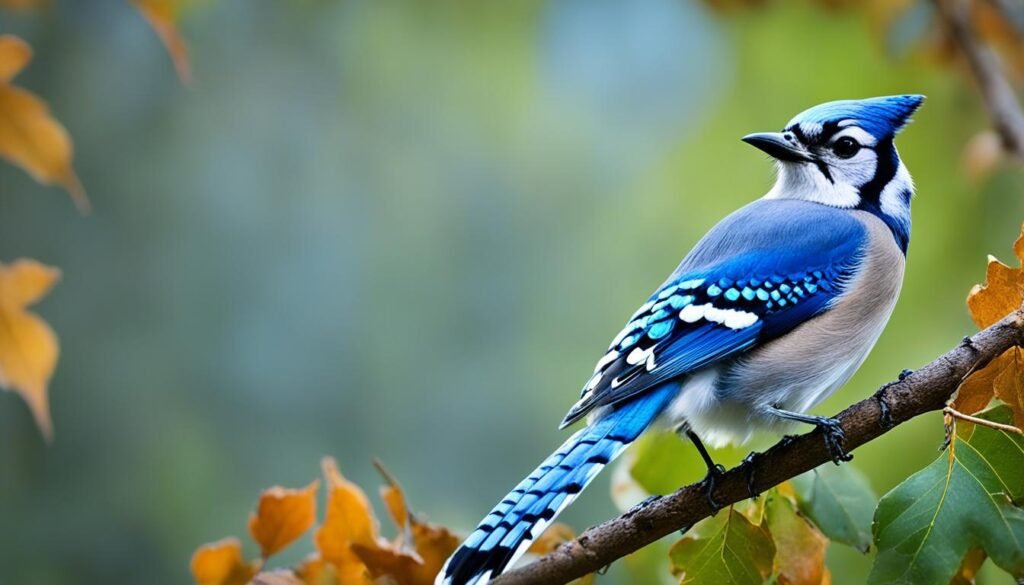
While many avian species have stringent requirements for their living environments, the Blue Jay exhibits a remarkable flexibility and preference for habitats that support their survival and wellbeing. From the dense canopy of oak trees to the dynamic edges of forests, this species has carved out a niche for itself. Even more intriguingly, Blue Jays have made a successful leap into the urban and suburban regions, displaying an adaptive prowess that ensures their continued proliferation.
Importance of Oak Trees and Forest Edges
Integral to the Blue Jay’s habitat preferences are oak trees, which provide not only a source of sustenance in the form of acorns but also nesting opportunities. The forest edges, another favored habitat, offer a diverse array of food sources and the protective cover necessary for nesting and rearing young. The interplay between these habitats is crucial to the life cycle of Blue Jays, affording them the means to feed, breed, and thrive.
Adaptations to Urban and Suburban Environments
Meanwhile, urban and suburban areas have been embraced by Blue Jays as alternative habitats. Despite the potential challenges posed by human-altered landscapes, these birds have demonstrated an impressive capacity to adapt. Through this adaptability, Blue Jays have expanded their territory, utilizing green spaces, parklands, and backyard feeders to supplement their needs in these man-made ecosystems.
| Habitat | Attributes | Benefits to Blue Jays |
|---|---|---|
| Oak Trees | Abundant acorns, sturdy branches for nesting | Food supply, shelter, and nesting sites |
| Forest Edges | Mix of dense cover and open space | Diverse diet, safer nesting away from deep forest predators |
| Urban Areas | Parklands, gardens, bird feeders | Accessible food sources, increased nesting opportunities |
| Suburban Regions | Backyards with vegetation, bird baths | Supplemental food, water sources, and reduced competition |
The Complex Social Systems of Blue Jays
The behaviors of Blue Jays are a testimony to their complex social systems, where intricate family structures and cohesive flock dynamics sketch the canvas of their existence. As natural forest dwellers, Blue Jays exhibit a kaleidoscope of social interactions that are as vibrant and multifaceted as their plumage.
During the mating season, which spans from mid-March to July, Blue Jays engage in lifelong partnerships. In a heartwarming display of avian fidelity, not only do they mate for life, but these couples collaborate in the meticulous process of nest building. The male and female Blue Jays, virtually indistinguishable by their similar plumage and slight size difference, shape the foundation of their lineage together, building nests that will safeguard their future progeny.
The repertoire of calls that Blue Jays possess is not just for communication within the flock; they also use it strategically to mimic the calls of raptors. This capability may serve as an alarm, warding off predators and protecting not just themselves but other birds in the vicinity. Their intelligence and mimicry are a cornerstone of their survival mechanisms within their complex social systems, much like their counterparts in nature who adopt mimicry for protection.
- Virginia opossums, preferring marshy habitats, hiss to feign aggression.
- Spicebush swallowtail caterpillars mimic bird droppings to evade predators.
- Viceroys imitate the appearance of toxic monarch butterflies to avoid predation.
Though often misjudged for pilfering eggs and nestlings of other birds, only a fraction of Blue Jays have been observed engaging in such behavior. Their diet, intrinsically connected to their complex social systems, also includes gathering and burying significant quantities of acorns, inadvertently contributing to forest growth.
| Blue Jay Behavior | Description | Impact |
|---|---|---|
| Acorn Gathering | Collect up to 4,500 acorns each fall | Plant over 3,000 oak trees annually |
| Mating for Life | Partners collaborate to build nests | Strong family bonds and shared childcare |
| Vocal Mimicry | Imitate raptors’ calls | Serve as a warning system for danger |
| Life Span | Average 5-7 years, up to nearly 27 years | Indication of adaptability and resilience |
In conclusion, the complex social systems of Blue Jays are emblematic of their intelligence and adaptability. These fascinating birds continue to intrigue ornithologists and bird enthusiasts alike with their sophisticated social behaviors that reflect a deep-rooted evolutionary success.
Blue Jays and Their Diet: An Omnivorous Lifestyle
Blue Jays, with their striking blue plumage and intelligent gaze, embody an omnivorous lifestyle that showcases the adaptability and ecological significance of these vibrant birds. Exhibiting a varied diet, these intelligent creatures encompass versatility in their eating habits, which enables them to thrive across diverse environments, from the dense canopies of Minnesota’s forests to the suburban backyards adorned with bird feeders.
Variety in the Blue Jay Diet
The diet of Blue Jays is as eclectic as their behavior, mirroring the very essence of an omnivorous lifestyle. A Blue Jay’s diet constitutes an array of nourishment options, from the seeds and acorns that they meticulously store for future consumption to the array of insects that form a substantial part of their diet. The diet also includes fruits, which contribute to the variety of nutrients they ingest, and at times, to supplement their diet, they may also feed on smaller songbirds’ eggs or young. Such a diverse dietary preference not only underscores their adaptability but also their role in maintaining ecological balance.
Acorn Storage and Its Ecological Impact
One remarkable behavior of Blue Jays that goes beyond simple consumption is their habit of acorn storage. Often hidden in the ground or tucked away in the crooks of trees, these caches serve as a vital food reserve during scarce times, highlighting the Blue Jays’ forward-thinking survival strategies. The ecological impact of this storage habit is far-reaching, as forgotten acorns may take root, leading to the proliferation of oak forests, which in turn support a plethora of wildlife, showcasing the intricate connections within our ecosystem.
The understanding of a Blue Jay’s diet and its concomitant ecological impact offers invaluable insights into the importance of conserving this species. As seed dispersers, they contribute significantly to forest regeneration and diversity. While the population trend has shown disturbing declines in some areas, their status as classified by the International Union for Conservation of Nature as Least Concern reflects the current broad distribution and population estimates of Blue Jays. Nevertheless, protecting their habitats and mitigating threats such as predation by domestic animals remain imperative for the sustenance of their populations and the ecological roles they fulfill.
Nesting Behaviors of the Blue Jay Bird

The nesting behaviors of the Blue Jay bird reflect their adaptability and resilience within their habitats, from towering forests to suburban backyards. Essential to understanding these creatures is observing where and how they construct their homes.
Primarily found nestled within the boughs of deciduous or coniferous trees, Blue Jay nests perch delicately 10-25 feet above the ground—affording protection from ground predators. The nests themselves are architectural feats, often described as bulky and cup-shaped, paralleling the intricacies of urban construction with resources found in nature.
In a single season, nesting behaviors of these birds feature the production of generally one, occasionally two broods, in regions where resources are abundant. Blue Jays lay a variable clutch size ranging from 4-5, sometimes stretching to 7 eggs. Each egg, within their roughly 28 x 20 mm size, boasts a unique coloring, often a tapestry of bluish, olive, or buff shades with dark spots.
Once the clutch is complete, the incubation period begins, lasting between 17-18 days, with the female assuming the attentive role of warming the future progeny. Hatchlings then experience a fledgling period of approximately 17-21 days before embarking on their maiden voyage from the nest.
Blue Jays are occasional recyclers in their nesting behaviors, choosing to reuse nests that have proven secure before. This behavior exemplifies the bird’s intelligent use of resources and energy. Nonetheless, these birds face challenges as the North American Breeding Bird Survey has noted a population decline—27% between 1966 and 2019—although they still maintain a healthy global population estimated at 17 million. Significantly, their Continental Concern Score remains relatively low at 9 out of 20.
Despite their clever nesting behaviors, Blue Jays’ interaction with human-altered landscapes bears a significant risk; domestic cats and dogs contribute to mortality rates. Vigilant and adaptable, Blue Jays carve out their existence, displaying a regal bearing among the avian kingdom through their meticulous nesting behaviors.
- Peak nesting period: March to July
- Preferred nesting height: Five to fifty feet
- Typical clutch size: 2 to 7 eggs
- Incubation: 17-18 days by the female Blue Jay
- Fledgling duration: Leave the nest around 17-21 days post-hatching
- Nest dimensions: 10-12 centimeters deep, 17-21 centimeters across
- Nest location: Opt for fork or limb on a tree
Exploring the nesting behaviors of the Blue Jay bird not only offers insight into their life cycle but also deepens our understanding of the ecological roles they play, underscoring the importance of conservation efforts to maintain the beauty and diversity of avian life.
The Vocalizations and Mimicry of Blue Jays
Blue Jays are renowned for their diverse vocalizations and exceptional mimicry skills. Among their repertoire, the most familiar is a loud jeer, a call that’s become synonymous with these colorful birds. Vocalizations play a critical role in their communication tactics, which include the use of crest flection. This nuanced body language coupled with complex sounds allows Blue Jays to convey important social signals to one another.
Their aptitude for mimicry is not just a fascinating behavior but serves multiple possible functions including mate attraction and territorial defense. Blue Jays, masters of vocal mimicry, can imitate a host of raptor calls such as the Red-shouldered and Red-tailed Hawks, which may confuse both predators and humans alike.
Communicating Through Calls and Crest Flection
Aside from loud jeers, the Blue Jay’s “whisper song” stands out as a testament to their vocal complexity. Lasting over 2 minutes, this softer, yet intricate melody includes a range of sounds from clicks and whirrs to liquid notes, asserting their prowess in communicating through calls. This whisper song, imbued with elements of various other calls, may serve multiple communicative purposes within their social sphere.
Moreover, Blue Jays use crest flection—raising and lowering their head crests—as a nonvocal signal, complementing their vocalizations and enhancing their ability to communicate complex information, especially during mating rituals or when expressing aggression or submission.
Mimicking Predators: An Advantageous Strategy
Blue Jays frequently mimic the calls of predatory birds, particularly hawks. This form of mimicry, heard most often in late summer and autumn, might function as a form of predator alert or mobbing strategy, deterring potential threats by conveying the presence of a larger predator. They have also been documented snapping their bills or hammering beaks in times of stress, adding to their repertoire of warning behaviors.
Interestingly, mimicry by Blue Jays extends to foraging activities, seemingly used as a strategy to dampen the vigilance of other species while Blue Jays forage. The occurrence of these mimic calls at least once a month, particularly imitating the “scream” of a Ring-billed Gull or the distinct cry of a Red-tailed Hawk, suggests a robust strategy that may aid in their survival within diverse environments.
An interesting point to note is that despite the extensive observations of Blue Jays using mimicry, the full extent of why they imitate raptors remains a mystery. Some suggest that the incorporation of environmental sounds like hawk calls could serve in roles from predator deterrence to social cohesion, but concrete evidence for these theories is still being gathered.
Migration Patterns: A Mysterious Aspect of Blue Jays
A captivating topic within avian studies is the migration patterns of Blue Jays, a subject shrouded in enigma and complexity. Scholars and bird enthusiasts alike have long studied the scattered flock sizes and the erratic nature of these migrations, often leading to more questions than answers.
Notably, the movement of these birds does not occur under the veil of night, like many other species, but conspicuously during the day. Observations indicate varying flock sizes, ranging from lone wanderers to contingents nearly forty strong – a testament to the mysterious aspect of these birds’ migration patterns.
| Average Flock Size During Migration | Geographic Distribution | Migration Time |
|---|---|---|
| Individuals to groups of 40 | Southward to Florida, Gulf Coast, Texas | Daytime |
| Migration fluctuations observed with no set component migrating yearly | ||
Intriguingly, while the general southward trajectory to regions like Florida, the Gulf Coast, and Texas is well-documented, the component of the population that migrates annually remains inscrutable. Compounding this mystique is the reality that technological advancements have only recently begun to uncover the ecological intricacies of Blue Jays’ migration patterns.
- Band records depict fluctuations in yearly migration.
- Sightings of these birds in Bermuda, offering anecdotal glimpses beyond their known range.
- Thousands of Blue Jays witnessed daily at the height of fall migration in select locations.
Amid the uncertainty, sightings outside conventional migratory routes, such as the rare cases recorded in Bermuda, only deepen the mystery. These outliers, supported by occasional photographic evidence, suggest undiscovered facets of Blue Jay migrations. It is evident that migration patterns of Blue Jays remain a cryptic chapter in the natural history of these charismatic avians.
Feeding Techniques and Diet Specialization
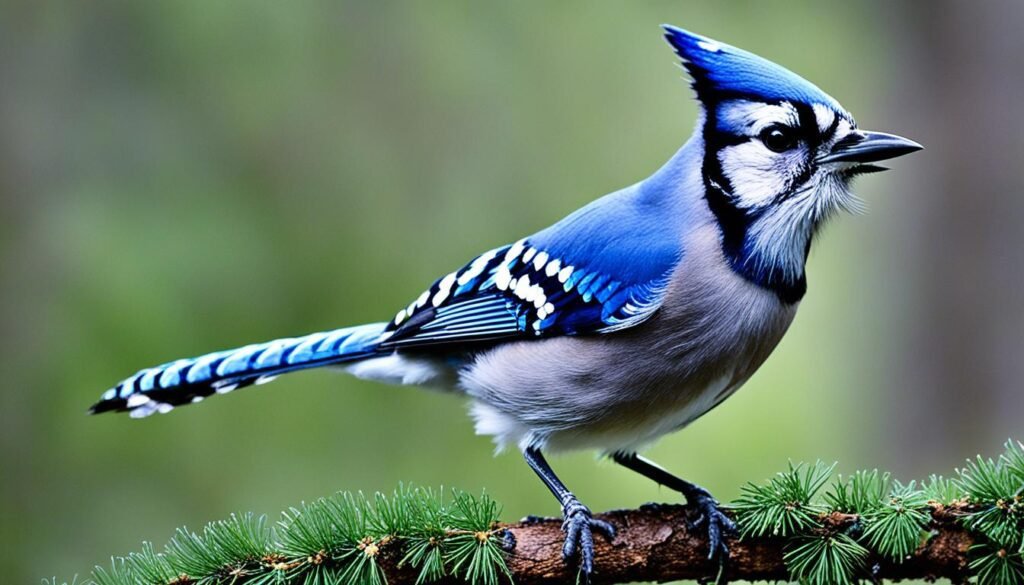
The remarkable Blue Jays showcase an array of specialized feeding techniques that ensure their survival and contribute to the ecosystem’s complexity. Expert foragers, these birds employ diverse strategies for sourcing their food, which vary with the seasons and available resources. A focus on their diet specialization reveals a sophisticated understanding of their environment as they deftly balance nutrient intake with energy conservation.
Gleaning Strategies for Insect Predation
Blue Jays are adept gleaners, utilizing their sharp vision and agility to snatch insects from leaves and bark. This gleaning approach is a testament to their feeding techniques and diet specialization. With refined maneuvers, they peck and pluck various arthropods, caterpillars, and beetles, fulfilling their dietary needs for protein. Whether high in the canopy or among the undergrowth, they exhibit a remarkable flexibility in their hunting methods.
Caching Behavior and Food Storage
Another aspect of the Blue Jays’ ingenious survival tactics is their caching behavior. Throughout the year, these birds practice food storage, hiding seeds and nuts in numerous locations for future consumption. This method of caching is intricately linked with their spatial memory, enabling them to retrieve hoarded supplies during food-scarce periods, thus showcasing their exceptional foresight and planning abilities.
Understanding the intricate feeding practices of Blue Jays highlights the importance of biodiversity and ecological balance. These birds’ diet specialization, efficient gleaning strategies, and complex caching behavior contribute significantly to forest dynamics, emphasizing the wonders of nature’s interconnected web.
- Offering a diversity of foods, including mealworms and black-oil sunflower seeds, enhances the likelihood of Blue Jays visiting feeders.
- Blue Jays, with their preference for foods like striped sunflower seeds and suet, benefit from feeders placed within protective cover for safety.
- Their gleaning strategies are complemented by access to water sources such as birdbaths, underlining the significance of a holistic approach to backyard bird feeding.
Feeders located in southeastern Pennsylvania have demonstrated the effectiveness of strategic feeding techniques in attracting Blue Jays among a variety of bird species. With these initiatives, bird enthusiasts can support the delicate balance of local ecosystems while enjoying the dynamic activities of Blue Jays.
Interactions with Other Species at Feeders
The dynamic world of avian interactions at feeders is exemplified by the conduct of Blue Jays, a species that exhibits both complex behaviors and compelling dominance tactics over Other Species. An extensive study involving 136 common North American bird species provided detailed observations and insights into these Interactions at Feeders. Notably, size played a significant role, with larger birds typically instilling more intimidation. However, there were surprising findings, such as the Downy Woodpeckers, which, despite their small size, commanded respect owing to their formidable bills.
Aggression was another highlight of the study; Hummingbirds, for instance, are typically associated with a delicate demeanor, but they exhibited robust levels of aggression to secure their food source. A particularly imposing scene involved a grackle that caught and consumed chickadees that crossed its path – a stark reminder of the survival challenges present within these feeder communities.
While some birds rely on their physical presence, Others, such as Black-capped Chickadees, leverage their belligerent nature to claim command at feeders, even against the slightly larger Goldfinches. Such intricate dynamics are a testament to the multifaceted nature of feeder ecosystems. Blue Jays, known for their confident disposition, were found to be evenly matched with European Starlings, suggesting a complex and nuanced hierarchy at play.
- Mourning Doves, with their typically passive behavior, were surprisingly competent in outcompeting House Sparrows.
- Strategy also comes into play, with American Crows showcasing the power of community by banding together to repel Common Ravens.
- Similarly, Red-bellied Woodpeckers have displayed dominance over their larger cousin, the Pileated Woodpeckers, in the context of feeders.
Within this landscape of vigor and rivalry, Blue Jays have garnered a reputation for their assertive and vocal approach, perhaps contributing to their prowess at feeders. This study, which saw its database double since inception, provides compelling evidence that understanding the interplay of species at feeders is crucial, as it reflects broader environmental interactions and hierarchies. The Blue Jays‘ size, nesting habits, and migratory patterns are just some attributes that may influence their relationships with Other Species in these settings, reflecting the intricate fabric of the natural world where every species plays a unique role.
Conservation Status of the Blue Jay
The Blue Jay, a vibrant presence across Missouri and beyond, stands as a testament to nature’s resiliency. Yet, as we delve into the conservation status of this species, we’re prompted to consider how human impact has influenced Population Trends and established Concern Scores. The iconic bird—first described by Carl Linnaeus in 1756—exhibits a remarkable adaptability to various habitats, particularly thriving in areas influenced by human activity.
Through decades of observation, we’ve seen the Blue Jay’s numbers ebb and flow, with a notable 28 percent increase in populations between 1966 and 2015. However, fewer than 20 percent participate in annual migrations, leading to concerns about the stability of regional populations. Remarkably, these birds have extended their range into northwestern territories, once an uncommon sight. Their intelligent and sociable nature, characteristic of the Corvidae family, affords them an edge in adaptation.
Population Trends and Concern Scores
Dwindling populations in certain areas pose questions about the Conservation Status of the Blue Jay. With intricate societal behaviors and a diet predominantly composed of plant matter, Blue Jays maintain a standard of intricacy and simplicity amidst environmental pressures. Their presence in cities and towns with abundant parks symbolizes the conservation success of human-adaptive species.
Population metrics tell a story of careful monitoring and growing awareness of these birds’ space in our ecosystem. Adaptation has been a strong suit for the Blue Jay, allowing them to flourish in varied conditions and expand into new territories, as observed in Idaho and Montana. These shifts encourage conservationists to continuously update Concern Scores to reflect the Blue Jay’s ecological needs and habitat pressures.
Human Impact on Blue Jay Survival Rates
The Human Impact on the wellbeing of Blue Jays is multifaceted. While some developments, such as bird feeders, have been beneficial, others like habitat fragmentation present significant challenges. The emergence of urban edge habitats has influenced dietary habits, with these birds often relying on offerings from backyard feeders. Conservation Status assessments reflect these shifts in habitat and availability of resources, prompting calls for mindful landscaping and conservation efforts to uphold population stability.
Further studies are critical to understanding Blue Jay adaptation strategies and the intricacies of their social behavior. As fewer nests are raided compared to stereotypes of corvid behavior, the Blue Jay’s role in ecology becomes even more nuanced. Researchers and conservationists alike continue to champion the harmonious integration of these birds into human-altered landscapes to preserve the biodiversity they contribute to our native ecosystems.
| Statistic | Data |
|---|---|
| Length of adult Blue Jays | 11 to 12 inches |
| Lifespan in the wild | Commonly 5 to 10 years, with a record of 16 years |
| Increase in population (1966-2015) | 28 percent |
| Percentage of migrants | Less than 20 percent annually |
| Dietary composition | Primarily insects, seeds, nuts; little predation on eggs and birds |
Conclusion
Throughout this comprehensive exploration of the vibrant Blue Jay, we’ve encountered various remarkable aspects of its existence, habits, and the challenges it faces. Despite a concerning decline of roughly 27% in their populations between 1966 and 2019, the Blue Jay remains a species of relatively low conservation concern, with an estimated global breeding population of 17 million. These birds have shown resilience and adaptability, thriving in both natural and human-altered environments.
As fewer than 20% of Blue Jays participate in migration, understanding this selective behavior remains crucial. Additionally, these creatures face threats from domestic pets, with cats and dogs being leading causes of Blue Jay fatalities linked to human activity. To bolster their conservation, it is essential to mitigate these risks where we can. Migration trends offer a promising outlook, with an observed increase in populations in regions north of their traditional habitats, hinting at their evolutionary tenacity.
In our conclusion, reflecting upon the intricate details of the Blue Jay—from their diet of nuts, seeds, and small animals, to their astounding capability to live beyond two decades in captivity—we capture a mere glimpse of their ecological importance. Striking a balance between informative detail and narrative engagement, we hope to have elevated awareness and an appreciation for the conservation efforts required to foster the continued presence of the Blue Jay in our North American landscapes. The longevity of these resilient, intelligent birds hinges on the collective action we take now and in the future.
FAQ
What is the Blue Jay bird known for?
The Blue Jay bird is known for its vibrant blue, white, and black plumage, perky crest, and noisy calls. It is also recognized for its intelligence and complex social systems.
Where are Blue Jays found?
Blue Jays are found in various types of forests, especially near oak trees and forest edges. They are commonly found in eastern and central North America.
What do Blue Jays eat?
Blue Jays have an omnivorous diet that includes vegetable matter, insects, nuts, berries, and even small vertebrates.
Where do Blue Jays build their nests?
Blue Jays build their nests in the crotch or thick outer branches of trees, typically in woodland areas.
How do Blue Jays communicate?
Blue Jays communicate through a wide variety of vocalizations, including their distinctive call that increases in speed when the bird becomes more agitated. They also use crest flection as a form of communication.
Do Blue Jays migrate?
While Blue Jays often migrate south, the exact migration patterns and factors influencing their migration remain a mystery. Some individuals may migrate one year while others may stay year-round.
What is the conservation status of Blue Jays?
Blue Jays have experienced population declines due to factors such as habitat loss and predation by domestic pets. They are currently listed as a species of least concern, but continued conservation efforts are important for their survival.

